Shanxi Province, abbreviated as “Jin,” is located in northern China on the eastern edge of the Loess Plateau. As one of the birthplaces of Chinese civilization, Shanxi is a treasure trove of cultural and historical riches. The capital city, Taiyuan, has a long and complex history. Other cities like Pingyao, Datong, and Yuncheng offer their own unique charm with ancient temples, preserved towns, and natural wonders.
With a landscape dominated by hills and mountains, Shanxi is also known for its vast coal reserves, earning it the nickname “the sea of coal.” But beyond industry, the province is steeped in heritage—home to temples over a thousand years old, ancient merchant houses, and sacred Buddhist sites. This makes Shanxi an ideal destination for travelers interested in Chinese history, traditional culture, and off-the-beaten-path exploration.
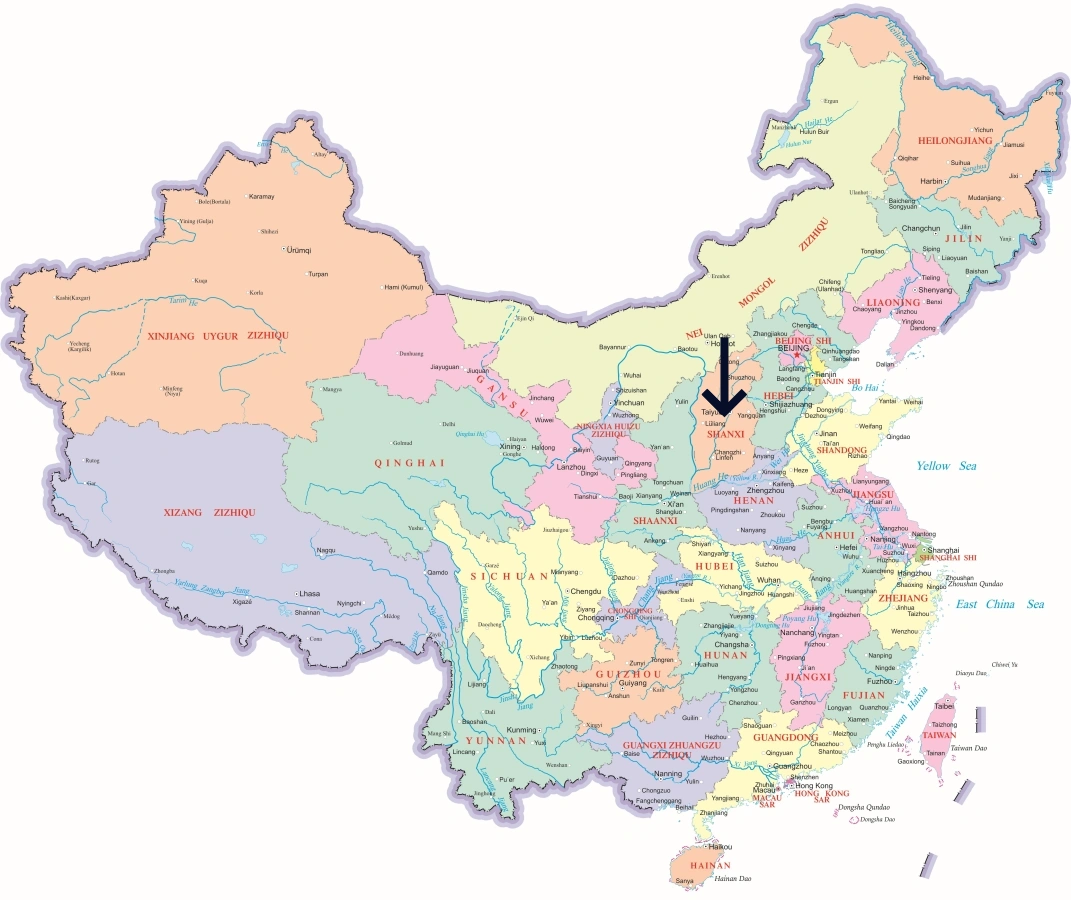
Shanxi has 11 prefecture-level cities, each offering a distinct experience. Whether you’re looking to discover Buddhist grottoes, walk ancient walled towns, or immerse yourself in local life, there’s something for every kind of traveler.
Popular destinations like Taiyuan, Datong, Jinzhong, Linfen, and Yuncheng are commonly visited. However, lesser-known cities such as Xinzhou, Lüliang, Yangquan, Changzhi, and Shuozhou offer hidden gems that are worth the detour.
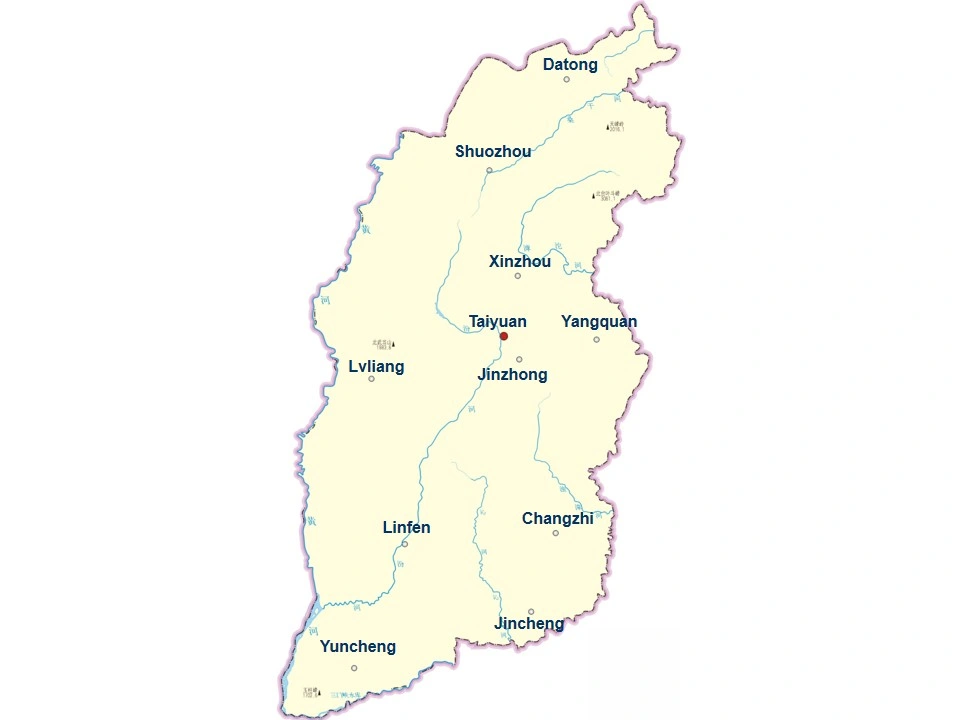
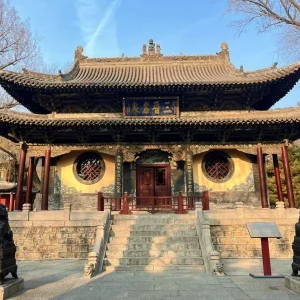
The provincial capital, once known as Jinyang, is a key cultural hub with historic sites such as Jinci Temple, Twin Pagoda Temple, and the Shanxi Museum.

Once a frontier city in ancient China, Datong is famous for the UNESCO-listed Yungang Grottoes. Other highlights include Huayan Monastery and the awe-inspiring Hanging Temple.
-300x300.webp)
A living relic of Ming and Qing architecture, Pingyao Ancient City offers ancient banks, courtyards, and defensive walls that take you back centuries.
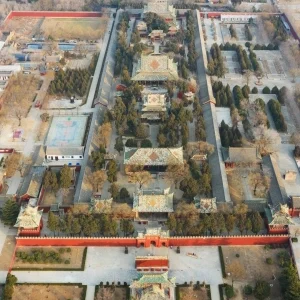
Believed to be the hometown of the legendary General Guan Yu, Yuncheng features the Guandi Temple, Yongle Palace, and salt lakes with mirror-like reflections.

Considered the mythical capital of Emperor Yao, Linfen is home to the powerful Hukou Waterfall, the Yao Temple, and the Great Pagoda Tree Memorial Garden.
Rich in cultural landmarks and dramatic landscapes, Shanxi offers unforgettable experiences for heritage lovers and history buffs alike.
From ancient Buddhist art to merchant mansions and roaring waterfalls, the province is filled with authentic, unspoiled beauty.
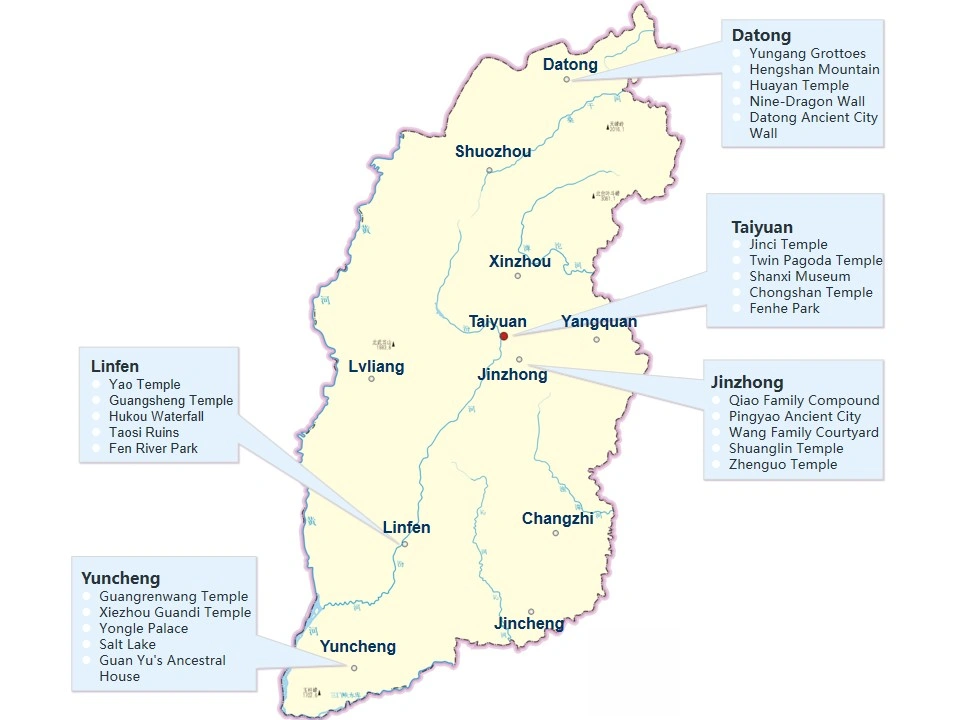
-300x300.webp)
One of China’s four major Buddhist cave complexes. These stone carvings date back over 1,500 years and showcase an incredible blend of Indian and Central Asian styles.
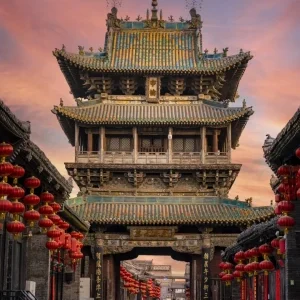
China’s best-preserved walled town from the Ming and Qing dynasties. Stroll along cobbled alleys, visit old banks like Rishengchang, and take in the living history.

Located on the Yellow River, this is the largest waterfall on the river and the second largest in China. The water’s thunderous force is most impressive during spring and autumn.
-300x300.webp)
A wooden temple built into the cliffs of Mount Heng, suspended dramatically above the ground. It’s an architectural marvel that has stood for more than 1,400 years.
-300x300.webp)
A luxurious Qing Dynasty merchant mansion known for its ornate carvings, vast courtyards, and maze-like design. It offers a deep dive into Shanxi’s once-thriving merchant culture.
-300x300.webp)
One of China’s four sacred Buddhist mountains. With over 50 temples and monasteries, it's a place of spiritual reflection and stunning alpine views.
Shanxi cuisine, also known as Jin cuisine, is rich, hearty, and famous for its variety of noodles and fermented flavors.
The locals take great pride in their mastery of dough—whether it’s knife-cut, rolled, or steamed into spirals. Dishes are typically savory and bold, ideal for those who enjoy northern Chinese flavors.
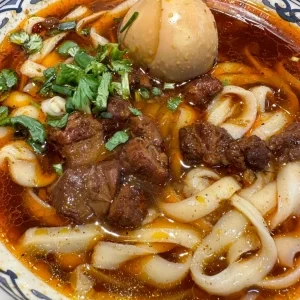
Hand-shaved into boiling water and served with rich broths or stir-fried toppings. They're chewy, flavorful, and extremely satisfying.

A classic home-style dish featuring deep-fried pork slices coated in a tangy and savory sauce. It pairs perfectly with rice or noodles.
-300x300.webp)
A refreshing snack made from pea or millet starch. Often served cold with garlic and chili dressing—perfect on a summer day.
-300x300.webp)
Made from oat flour, these steamed spiral noodles are chewy and paired with savory dips. A staple in Xinzhou and Lüliang.
-300x300.webp)
A hearty soup-like dish made with yellow wine, lamb, longan, and Chinese yam. It’s known for warming the body in the frigid Shanxi winters.
-300x300.webp)
A breakfast favorite. Think of it as a steamed flour jelly that's sliced, pan-fried, and served with garlic dipping sauce.
Shanxi spans about 156,000 square kilometers and is home to approximately 34.2 million residents. Here’s a breakdown by major city (based on 2023 estimates):
Taiyuan: 6,998 km² – approx. 5.3 million
Datong: 14,176 km² – approx. 3.4 million
Yangquan: 4,552 km² – approx. 1.2 million
Changzhi: 13,864 km² – approx. 3.2 million
Jincheng: 9,490 km² – approx. 2.3 million
Shuozhou: 10,588 km² – approx. 1.6 million
Xinzhou: 25,139 km² – approx. 2.9 million
Lüliang: 21,143 km² – approx. 3.1 million
Jinzhong: 16,408 km² – approx. 3.3 million
Linfen: 20,275 km² – approx. 3.7 million
Yuncheng: 13,968 km² – approx. 4.7 million
Shanxi has a temperate continental monsoon climate. Winters are cold and dry, while summers are warm and occasionally rainy. The province experiences large temperature swings between day and night. Taiyuan is used here as a reference for typical temperatures:
Jan: -8 to 2°C (17–35°F), dry and cold with occasional snow
Feb: -5 to 5°C (23–41°F), slightly warmer but still chilly
Mar: 0 to 12°C (32–54°F), signs of spring
Apr: 6 to 20°C (43–68°F), ideal for spring travel
May: 12 to 26°C (54–79°F), comfortable for outdoor activities
Jun: 17 to 30°C (63–86°F), with summer showers
Jul: 20 to 32°C (68–90°F), hottest month
Aug: 18 to 30°C (64–86°F), warm with less rain
Sep: 12 to 26°C (54–79°F), early autumn breezes
Oct: 5 to 20°C (41–68°F), crisp and cool
Nov: -2 to 10°C (28–50°F), starting to get cold
Dec: -6 to 4°C (21–39°F), dry and windy
Best travel months: April–June and September–October.
Here are the main postal codes and telephone area codes for Shanxi’s major cities:
Taiyuan: 030000 / 0351
Datong: 037000 / 0352
Yangquan: 045000 / 0353
Changzhi: 046000 / 0355
Jincheng: 048000 / 0356
Shuozhou: 036000 / 0349
Xinzhou: 034000 / 0350
Lüliang: 033000 / 0358
Jinzhong: 030600 / 0354
Linfen: 041000 / 0357
Yuncheng: 044000 / 0359
